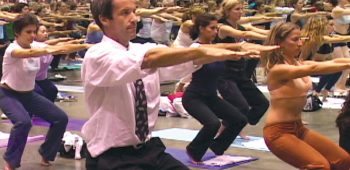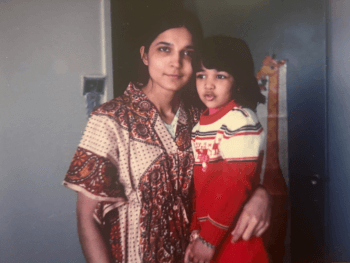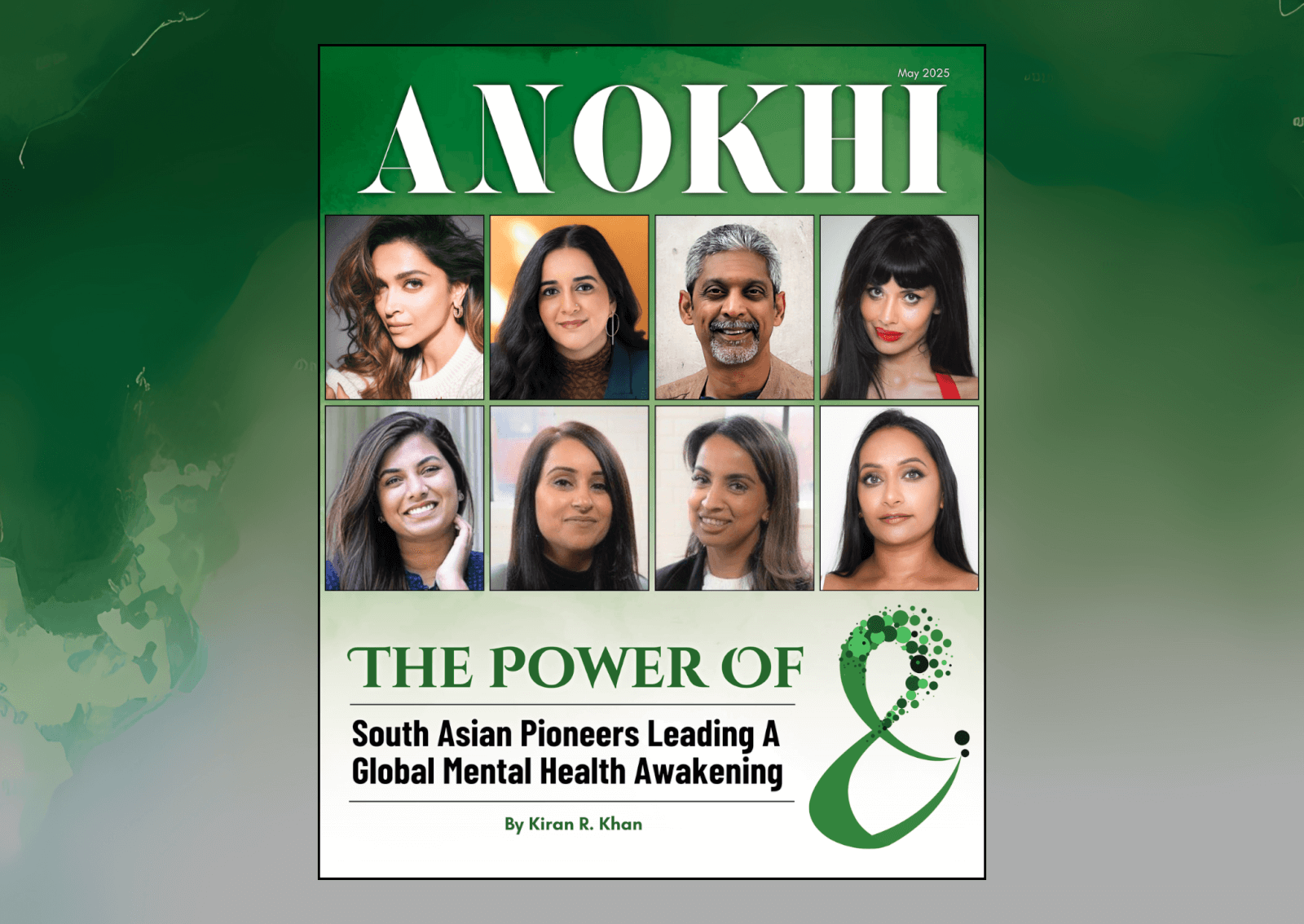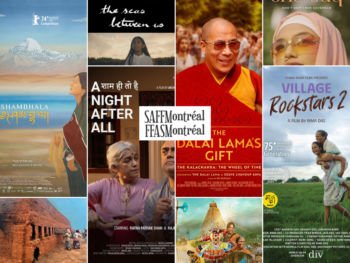
As a yoga teacher of Indian descent, I am grateful to have learned what I know about yoga from my training in India. It allows me to keep a safe distance from the yoga monster that has developed in North America over the last 40 years.
Yoga practitioners* in North America have a passion for yoga as it gets the results they desire, and non-practitioners have a reverence and fascination for its possibilities. So what exactly does yoga promise to deliver?
According to the yoga sutras (aphorisms), by devoting your life to yoga, you will achieve liberation. You will understand your life’s purpose. You will know peace and be free from fear, and then your life can be devoted to serving humanity. Who wouldn’t want this?
In his new film Yoga Inc., documentary filmmaker John Philp explores yoga’s unique journey in America. What began as the West’s fascination with Indian yogis contorting their bodies into seemingly impossible shapes, or taking hot pokers to their flesh without sustaining burns, turned into the desire to achieve an altered state of consciousness – without the negative effects of drugs (enter the Beatles and Maharaja Mahesh Yogi). Now everyone wants to look like Madonna when they’re 50. We want to find cures for everything from a saggy butt to cancer. We want to be unaffected by the stresses of modern life, all the while being rich, wise and happy.
Yoga Inc. documents the proliferation of yoga classes and products claiming to turn these promises into a reality. Everything from “Yoga for Dogs” to Chakra underwear has now hit the market. Yoga is used to sell vodka, computers and real estate. In an engaging and objective way, Philp’s documentary explores the emerging battle between America’s yoga “purists” and its current yoga capitalists. When I sat down with Philp in April 2007 while he was in Toronto to promote his film as a part of the Hot Docs film festival, I was curious about his motivation behind making this film and his opinion about the direction yoga is heading in America.
Philp, a former TV journalist, found himself in a Bikram Yoga class – sweating to the trademarked 26 postures and two breathing exercises – as a way to rehabilitate his body from the effects of long distance running. His skepticism hurriedly crept in, however, when the instructor suggested that students work on perfecting a particular posture as it would be judged during L.A.’s Yoga Championship being held in September 2004. Suspecting that America’s yoga machine had reached its pinnacle of exploitation, he ventured forth to shoot a documentary presenting both sides of this debate. He asks the question, “Is doing yoga for profit in conflict with yoga’s purpose?”
He made Yoga Inc. with the possibility of changing his own mind and that of his viewers’, about this controversial issue. It is clear in his film that American yoga practitioners, studio owners and teachers all have very strong opinions about the commercialization of yoga, and whether it has lost its way from its origins as a “spiritual” practice.
As I watched this thoroughly entertaining film however, I found that it overlooked a deeper question: was yoga in North America ever spiritual or pure to begin with? We talked about the hippies using yoga as an alternative to hallucinogenic drugs and their choice to live a non-materialistic life.
We talked about smaller yoga studios going out of business as local gyms offer yoga classes at cheaper rates. We talked about Bikram Chowdhury's attempt to copyright his series of yoga postures and his well-publicized legal dispute to prevent others from using his name unless they follow his mandate. All of this has taken the American yoga community to a battleground between purists (who aptly coined the term McYoga referring to yoga’s commercialization) and capitalists (who defend themselves stating that in India, devotees have always given their wealth to their guru).
After our interview, I began to wonder why this was such a contentious issue in America when yoga existed in India for thousands of years managing to transcend controversy.
Its philosophy rises above politics, religion and the personalities of its disciples. It exists in many incarnations and continues to evolve unopposed. So why can’t American yoga devotees follow suit and refrain from being self-righteous and judgmental? The very notion that there is a “right” method to practising yoga contradicts its transcendental and limitless nature. It doesn’t matter how you do yoga, it’s why you do it that matters.
You can practise yoga while taking out the garbage or driving in traffic if your intention is to achieve life’s highest purpose, which is to serve others. Chanting OM Shanti with candles lit and incense burning is no more yogic than peddling Shiva tank tops if you continue to speak ill of others. American yoga “purists” need to stop pointing the finger, accusing others of being un-yogic and ask themselves the more important question, “Am I, in action and in thought, living my life in the best interest of humanity, given my limited knowledge and ability?”
Yoga techniques were developed to remove the physical, emotional and mental obstacles that prevent the devotee from achieving enlightenment. If yoga postures cure your chronic back pain and liberate you from this burden, yet you don’t use this freedom to serve others, then you have lost the yogic way. If your yoga business has blessed you with financial abundance but you don’t help those less fortunate, then the purpose of yoga is missing in your life.
I encountered a variety of devotees and teachers in India, all of whom had very different ways of following yoga. The common thread, however, was how yoga had freed them to devote their lives to helping others. Ultimately, if there were measurable ways yoga devotees had gone beyond themselves to help others, then according to my understanding of its scriptures, they had achieved yoga’s ultimate purpose.
Through meeting many yoga practitioners in Toronto, I have seen how elitist many can be about the style of yoga they follow. They are often so attached to the method, believing it is the only true way, that they fail to understand the ultimate purpose of yoga.
Can yoga survive this conflict between capitalism and the American “purists’” claim that they follow yoga authentically? Yoga Inc. concludes that yoga is much older than America and much more stable than America’s assumption that it has so much influence on its survival. Yoga will survive in America while it continues to become whatever the market demands.
As far as liberation through yoga goes: if you’re looking for enlightenment in a chant or in a pair of pants, why not look at your intentions behind reciting those words or why you bought those pants in the first place?
*I use the term practitioner, not yogi. From my understanding, yogi is a term used to describe someone who has achieved enlightenment through yoga, not someone who teaches or takes a class.
Sonia Dhillon Tully can be seen on SunTV’s Intimate Yoga, weekdays at 6 a.m. She works primarily with people suffering from chronic pain and neurological disorders due to automobile accidents. For more information, visit intimateyoga.ca.
WORDS SONIA DHILLON TULLY

















































































































